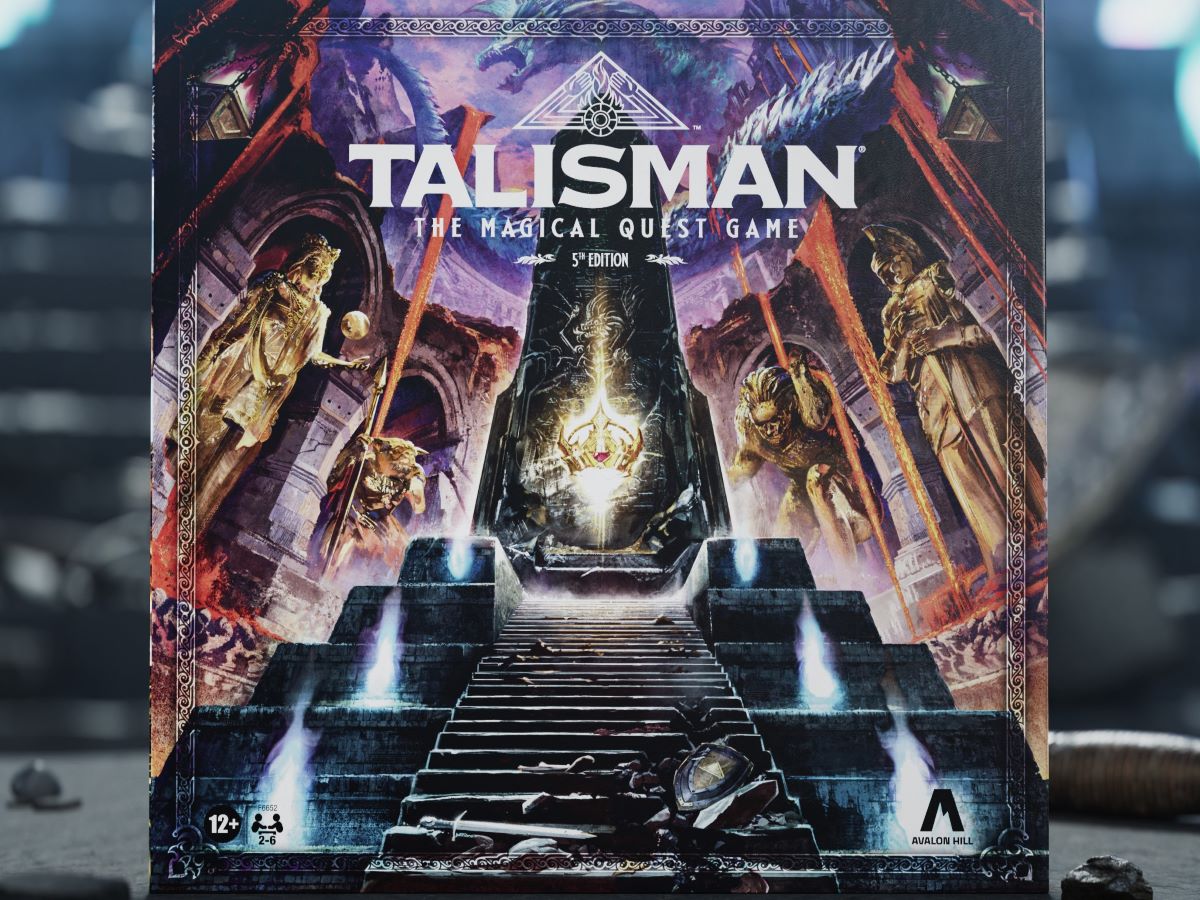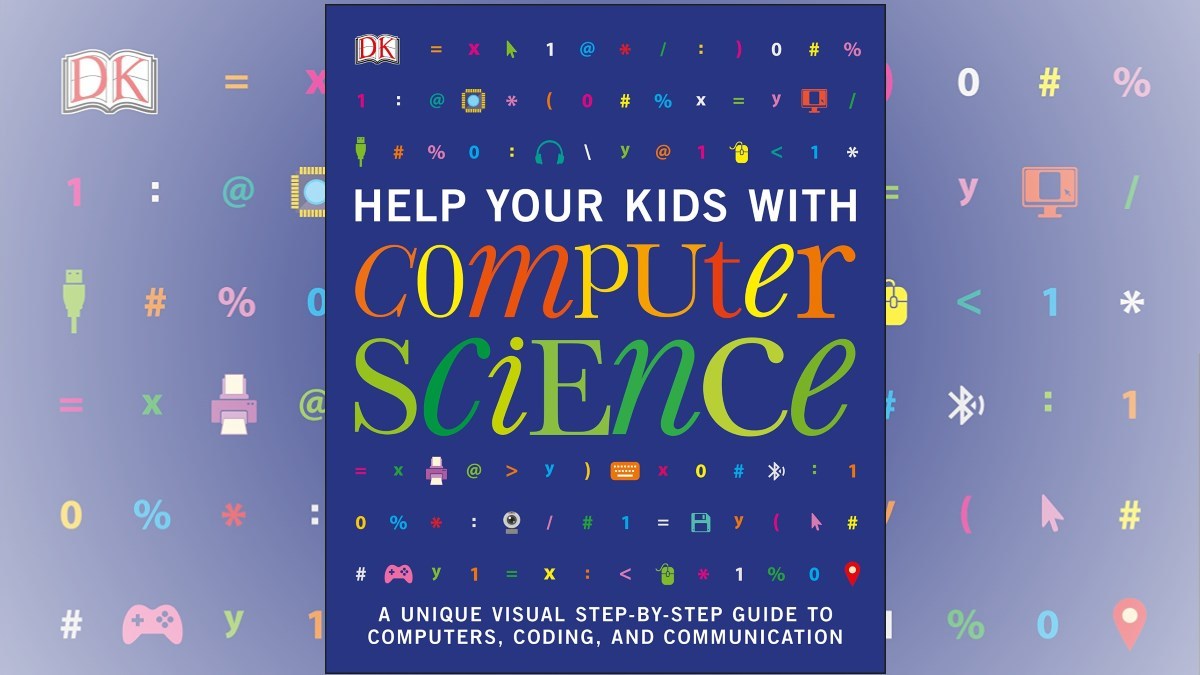In the 1980s, Dungeons & Dragons was the rage and fantasy-themed games flooded the market trying to reap their own gold from the popularity. Many of those have long since been forgotten. However, in 1983, Games Workshop released an adventure board game with a role-playing feel called Talisman: The Magical Quest Game. While the first games were black and white, two years later a 2nd edition was released with colorized components. A 3rd edition hit tables in 1994 and then a 4th edition in 2008. Now 16 years later, a 5th edition of Talisman: The Magical Quest Game is now available.
What Is Talisman: The Magical Quest Game, 5th Edition?
Talisman: The Magical Quest Game, 5th Edition is an adventure board game set in a fantasy world for 2-6 players, ages 12 and up, and takes about 90 to 120 minutes to play. Players take on roles of competing adventurers and explore a magical land, encountering creatures and treasures along the way to their ultimate victory. The game is currently available from your local game store as well as online retailers such as Amazon. The suggested retail price is $59.99 for a copy of the game. Talisman: The Magical Quest Game, 5th Edition was designed by Robert Harris and published by Avalon Hill.
Talisman: The Magical Quest Game, 5th Edition Components
Here is what you get in the box:
- 1 Gameboard
- 12 Character figures
- 12 Character cards
- 100 Adventure cards
- 18 Purchase cards
- 24 Spell cards
- 4 Talisman cards
- 30 Gold coins
- 1 Toad card
- 6 Toad tokens
- 12 Alignment tokens
- 38 Fate tokens
- 114 Counters

The gameboard is a map of the magical land of Talisman. It is divided into three regions: the outer, middle, and inner regions. Characters begin in the outer region and advance towards the inner region where they can complete the final quest to win the game. The regions are divided into locations with each space featuring text directing players on what kinds of encounters may occur at that location.

Players are represented on the gameboard by the miniature of their character. The game includes 12 unpainted, detailed miniatures.

Each character has their own character card. Their alignment (good, neutral, or evil) is represented in the upper left corner. To the right of the image is text that describes that character’s special abilities. Along the left side are the character’s starting strength and craft values while the right side lists their starting gold, fate, and life. The bottom of the card informs players in which location that character begins the game.

As players explore the land, they will draw adventure cards there are different types of adventure cards. Events can affect the current player and sometimes all players. Places can add a feature to a location for either a limited amount of time or until the end of the game. Objects can be picked up and taken by players while followers join the character and may provide benefits (or disadvantages). Strangers have specific effects listed on their cards. Finally, enemies will attack characters who encounter them. There are two types of enemies: animals, which include dragons and monsters, and spirits.

Players have opportunities to purchase objects as they have encounters. When acquired in this manner, the objects are taken from the purchase cards. There are also four separate talisman cards which can be acquired by completing quests.

Depending on a character’s craft level, they can use spells. A character must have a craft level of at least 3 to have 1 spell. Craft levels of 4 and 5 can have 2 spells, and if a character has a craft level of 6 or higher, they can have 3 spells. Some characters begin with 1 or 2 spell cards and others can be acquired through encounters. When a spell is cast, the spell card is discarded.

It seems magic is often used to turn people into toads. As a result of an encounter, a player may be turned into a toad. The toad card lists the effects of the transformation and a toad token is placed on the character card for the one turn the player is a toad.

Each character has an alignment listed on their character card. When the alignment changes, an alignment token is placed over the original alignment to represent the current alignment for that character. Players begin with a number of fate tokens as listed on their character cards. Fate tokens can be spent to re-roll any one die once per turn. They can also be spent after a movement dice roll to ignore the roll and move your character up to six spaces.

Talisman: The Magical Quest Game, 5th Edition comes with three different colors of cone-shaped counters. Green counters represent the player’s current amount of life. Red counters are added as characters increase their strength, while blue counters are added for additional craft which is a magical ability. Small counters represent 1 point while large counters are 5 points.
How to Play Talisman: The Magical Quest Game, 5th Edition
The Goal
The goal of the game is to be the first player to obtain the Crown of Command.
Setup
Before you begin your adventure, you need to set up the game. Start off by placing the gameboard in the center of the play area. Shuffle the adventure and spell cards separately and place them in decks. Place the purchase cards in a deck nearby, but do not shuffle them. Position piles of counters, fate tokens, alignment tokens, and gold coins within easy reach of all players. Then place the talisman cards in a stack near the toad card and toad tokens.
Next, players choose their characters. Randomly select one player to choose from the 12 character cards. Then the player to the right selects their character and continues on to the right until everyone has a character. Players collect their starting gold coins, fate tokens, and life counters and place them to the right of their cards. Some characters also begin with a spell or two, so draw that number of spell cards from the deck. Though characters have an initial alignment, players can choose to change their alignment before the game begins by placing an appropriate alignment token over the alignment on their card. You are now ready to play Talisman: The Magical Quest Game.

Gameplay
The game is played in turns. The last player to choose their character goes first and play continues to the left. Each turn consists of two main parts: movement and encounters. At the start of a turn, the current player rolls one dice and can then must move that many spaces to the left or right of their current location. They must move the full amount. Move the character miniature to the new location and complete an encounter at that location.
Encountering a Location
Some locations have what to do for the encounter written right on the gameboard. Just follow the instructions to complete the counter. Other spaces have a card icon with either a +1 or +2. If there are no adventure cards already active at that location, draw the number of cards listed from the adventure deck. If there is more than one card, look at the encounter number in the bottom right corner of the image to determine which order to complete the encounters. If the card is an object, the player may pick it up and place it below their character card. The same goes for follower cards. For events, places, and strangers, follow the directions on the card.
If the adventure card is an enemy, you must fight the enemy. Animals, dragons, and monsters attack with strength, while spirits attack with craft. The enemy’s type of attack and value are listed on the card. The player must use the same attack (strength, or craft) as the enemy. To resolve the encounter, determine your character’s strength or craft. This includes your initial value, any counters you have added, and any abilities provided by objects you possess or your followers. Roll one die and add the results to your total strength or craft. Another player rolls one die and adds that value to the enemy’s strength or craft. If the character’s result is higher than the enemy, the enemy is defeated and the player can take that card and keep it as a trophy. If the enemy wins, the player loses one life. In case of a tie, no one is harmed and the player’s turn ends. Unless the player wins, the enemy card stays at the location and can be encountered by any player who lands on that space during their movement.

Encountering a Player
If another player’s character is at the location, you may choose to encounter the other character rather than the location. This is true even if an enemy card is already at that location. If you encounter another player, you do not draw adventure cards or follow any of the text on the location. The active player can choose to attack with either strength or craft and the defending player must use the same. The resolution is the same as encountering an enemy. However, the winner may choose to either force the losing player to lose a life or they may take one object or one gold from them. The player’s turn then ends.
The Inner Region
Once players reach the inner region, gameplay changes a bit. You no longer roll a die for movement. Instead, you can only move one space per turn and then encounter the location. Other players can only be encountered in three spaces in the inner region. Once you reach the Valley of Fire location, you must have a talisman card in order to advance to the final location. In addition, spells cannot be used against enemies in the inner region.
Game End
The game ends when a player has a talisman and reaches the Crown of Command location. There they must defeat the elder dragon using either their strength or craft. If the player is defeated, they lose one life and stay in the same location. During their next turn, they can encounter the elder dragon again or move one space away. Once a player defeats the elder dragon, they have obtained the Crown of Command and win the game.

Why You Should Play Talisman: The Magical Quest Game, 5th Edition
My first experience with the Talisman series was playing the 4th edition in a digital format. I found it entertaining, but like some digital interpretations of tabletop games, you miss out on the interaction with other players. Therefore, when I learned a 5th edition was coming, I was eager to get a copy and try it with my family. For those who are veterans of the game, the 5th edition has a few changes to the rules. In addition to being able to change your alignment before the start of the game, the talisman card does not count against the number of objects you can carry. If your character loses all their life and dies, you move the miniature to the village in the outer region. You keep all of your objects and followers as well as gold, fate tokens, and counters you have earned for strength and craft. You must then spend all of your gold to purchase life at one life per gold. If you have no gold, you begin with one life. As mentioned earlier, you can use fate tokens for movement and finally, if you turn into a toad, it only lasts one turn instead of three and you get to keep all of your cards. Personally, I feel these changes improve the game.
Talisman: The Magical Quest Game, 5th Edition is an easy game to pick up and play. Setup is quick and the turns are fairly simple: roll the die, move, and have an encounter. As such, it is easy to teach new players since most of the rules deal with encounters, which can be taught as you play. The components also look great. I like the detailed miniatures and the cone-shaped counters are much better than tokens and can be stacked. The plastic gold coins are also an improvement over tokens. I just wish the cards were a bit better quality. While they look good, they are smooth and thinner than I would like. As a result, I found them a bit more difficult to shuffle than thicker, textured cards. However, that is the only downside I found. I do like that the box includes a plastic organizer to keep all of the components ready to play the next game with compartments custom-made to fit each individual character miniature.

My family had a fun time playing Talisman: The Magical Quest Game, 5th Edition. Since they had not played any version before, it was easy for me to teach and the first time I had to refer to the rulebook a few times just to check on some rules to make sure I understood them. In the first game, we did not do any character encounters, mainly because we did not land on the same locations and were either weaker than the opponent or wanted to encounter the location instead. However, in subsequent games, as we felt more comfortable, we had more character encounters and let fly spells at each other as well. During most games, we all ended up in the inner region at the same time and it was just a matter of some die rolls as to who could get to the Crown of Command first to defeat the elder dragon.
While the game is primarily a board game, it has a bit of a roleplaying feel to it. Each character has different abilities and you build up your stats by defeating enemies, completing encounters, and finding objects and followers. With 100 adventure cards, the encounters are random and each game plays a bit differently depending on the order in which those cards are drawn during the game. Plus there is some take-that fun as you attack other players or use spells on them to hinder their progress. However, defeating other players is not the objective so the game remains a competition rather than a conflict.

My family and I really enjoyed playing Talisman: The Magical Quest Game, 5th Edition and we look forward to the first expansion, Talisman Alliances: Fate Beckons, which is scheduled to release in October of 2024. This expansion adds a new way to play as players cooperate to complete daunting trials together rather than compete against each other. If you enjoy fantasy-themed board games that are quick to bring to the table, fast-paced, and keep everyone engaged, then I recommend Talisman: The Magical Quest Game, 5th Edition.
For more information, visit the Talisman: The Magical Quest Game, 5th Edition page!
Click here to see all our tabletop game reviews.
![]() To subscribe to GeekDad’s tabletop gaming coverage, please copy this link and add it to your RSS reader.
To subscribe to GeekDad’s tabletop gaming coverage, please copy this link and add it to your RSS reader.
Disclosure: GeekDad received a copy of this game for review purposes.





